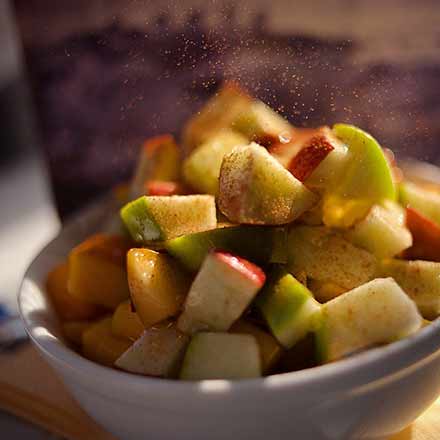Some of the most commonly purchased fruits are actually the highest in sugar, like bananas (18 grams per cup) and grapes (15 grams).
The same can be said for tropics-born favourites like mango (23 grams) and pineapple (16 grams).
To get a better idea of which fruits will be less likely to cause a blood sugar spike, nutritionist Katrin Lee, MS, RD, founder of Simply Nutrition NYC, recommends analysing the rest of the nutrition facts.
“Any fruits that have other major nutrients, like protein, fibre, or good fats will cause your blood sugar to spike slower because you’re also working to digest the other nutrients,” says Katrin.
“Just control your portions and eat a variety of types, so you can get the extra nutritional benefits of different fruits.”
Katrin also recommends going easy on over-ripe fruits if you’re really being strict about sugar-intake.
“The starch content turns into simple sugar, that’s why it tastes sweeter, too,” she adds.
Here are three of the best fruit options for the sugar-aware shopper to put high on the grocery list.
Apples

You know that whole “keep the doctor away” thing? It’s because apples are packed with antioxidant-rich nutrients. They contain about 11 grams of sugar per cup, but the key here is to eat the skin as well—which is packed with fibre that helps to temper the sugar spike.
Peaches

While these juicy, fuzzy fruits have about 13 grams of sugar per cup, they also have three grams of fibre to help your body use the sugar more efficiently. Peaches are also loaded with vitamins like A, C, and E, and antioxidants that help fight disease and slow aging.
Berries

Strawberries clock in at seven grams per cup, while raspberries have a mere five grams—not to mention, an impressive eight grams of fibre. When consumed at least three times a week, colourful berries are pretty powerful at fighting inflammation in the body, thanks to their high antioxidant content.